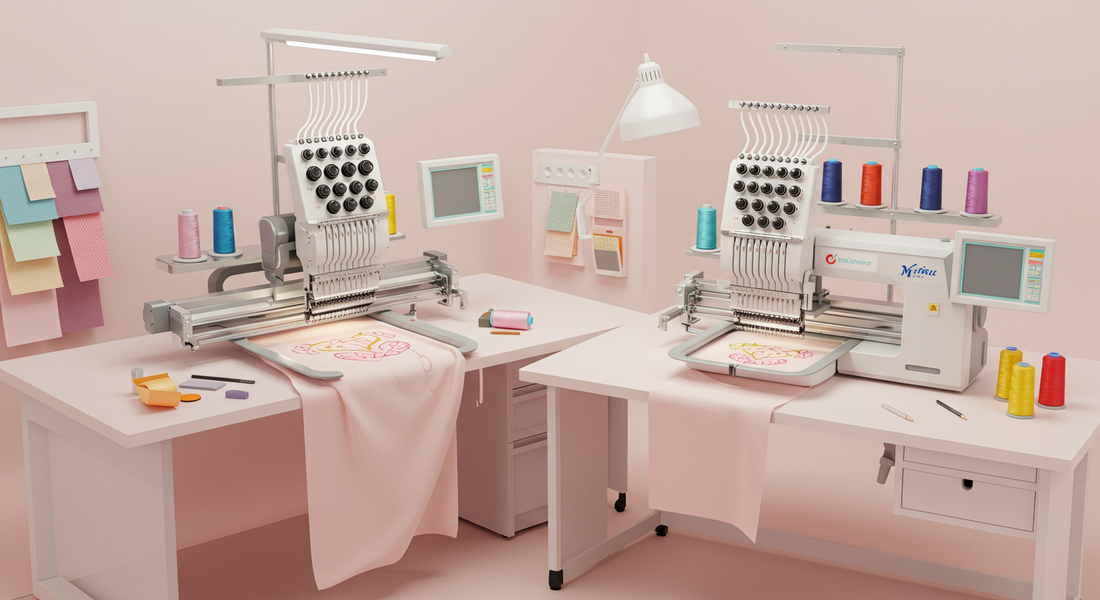
Embroidery Machine Basics: Understanding Different Types and Their Functionalities
Share
Whether you're a hobbyist or a small business owner, selecting the right embroidery machine is crucial to achieving high-quality results. From traditional single-needle models to advanced multi-needle and commercial machines, the embroidery world offers a variety of tools tailored to different needs. In this article, we’ll explore the main types of embroidery machines, how they work, and what functionalities set them apart.

- Single-Needle Embroidery Machines
Single-needle embroidery machines are the most common type for home use. They resemble a standard sewing machine but are designed to handle embroidery functions.
Key Features:
- One needle and one thread color at a time
- Built-in embroidery designs and fonts
- LCD touchscreen for design editing
- Hoop compatibility for different design sizes
Ideal For:
Beginners and hobbyists who want to personalize clothing, accessories, or home décor items.
Limitations:
Color changes must be done manually, and the embroidery speed is lower compared to commercial machines.

2. Multi-Needle Embroidery Machines
Multi-needle machines feature anywhere from 4 to 16 needles, allowing for automatic color changes without manual intervention.
Key Features:
- Multiple needles for faster production
- Automatic thread trimming and color changes
- Larger hoop sizes and embroidery fields
- Connectivity with digitizing software and USB ports
Ideal For:
Intermediate to professional users who want to create detailed designs efficiently or run a home-based embroidery business.
Advantages:
Significantly reduces production time and increases precision, especially for multi-color designs.

3. Commercial Embroidery Machines
Commercial machines are built for speed, durability, and high-volume output. They are widely used in professional embroidery studios and apparel manufacturing.
Key Features:
- Industrial build for long hours of operation
- High-speed stitching (up to 1,200 stitches per minute)
- Advanced design memory and networking capabilities
- Compatible with heavy-duty fabrics and large hoops
Ideal For:
Businesses producing bulk orders, uniforms, custom branding, and retail embroidery services.

4. Computerized Embroidery Machines
These machines are integrated with software that allows for the import and editing of digital embroidery files.
Key Features:
- USB ports, Wi-Fi, or cloud connectivity
- Touchscreen display for design customization
- Integration with embroidery software like Hatch, Embrilliance, or Brother PE-Design
- Access to thousands of digital designs
Benefits:
Greater creative control, more intricate patterns, and the ability to digitize custom artwork.
Choosing the Right Machine for Your Needs
When selecting an embroidery machine, consider the following:
- Usage level (personal, semi-professional, or commercial)
- Design complexity and frequency of color changes
- Available workspace and budget
- Compatibility with hoops, threads, and software
A single-needle machine may be enough for occasional personalization projects, while a multi-needle or commercial machine is ideal for those looking to scale.